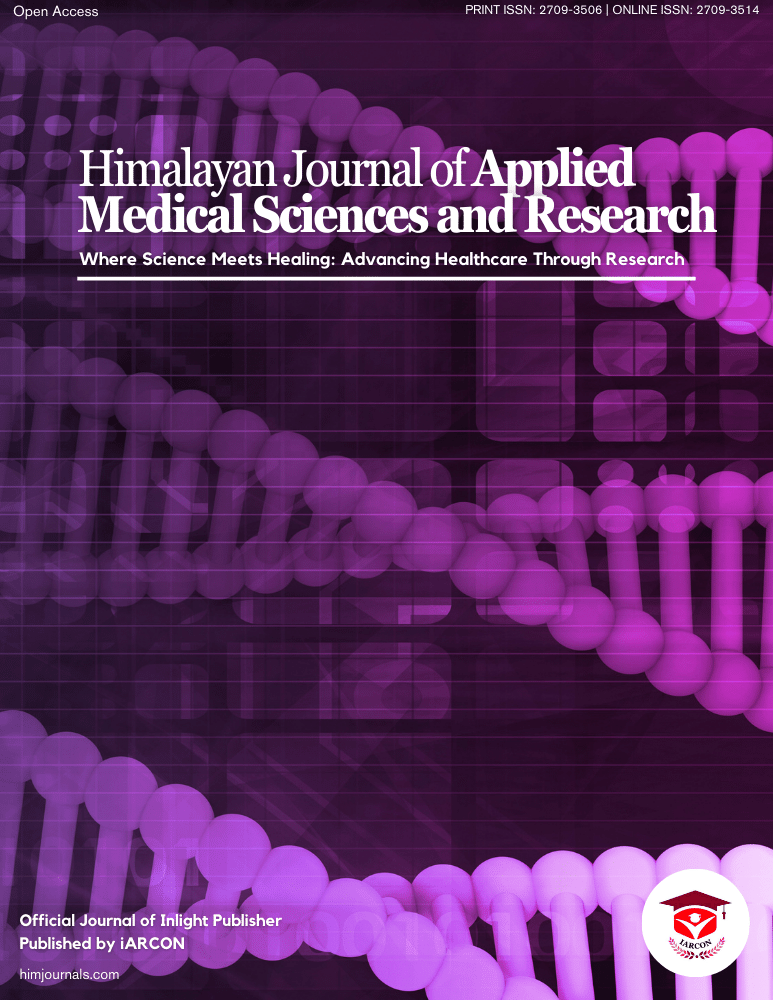1. World Health Organisation. Factsheet No 360: HIV/AIDS, 2014 [Internet]. Geneva; WHO; 2015 [cited 2015 Nov 7]. Available from: http://www.who.int/mediacentre/factsheets/fs360/e
n/.
2. Acharya, Pavana Krishnaraj, et al. "Ocular manifestations in patients with HIV infection/AIDS who were referred from the ART Centre, Hassan, Karnataka, India." Journal of clinical and diagnostic research: JCDR 6.10 (2012): 1756. https://doi.org/10.7860%2FJCDR%2F2012%2F4738.2637
3. World Health Organization. AIDS Epidemic Update. December 2017-2018; Geneva: WHO. 4. National AIDS Control Organization Annual Report 2017-18. Department of AIDS Control. Ministry of Health and Family Welfare.
5. Sharma, Ram Lal, et al. "Ocular manifestations in human immunodeficiency virus/acquired immunodeficiency syndrome patients and their correlation with CD4+ T-lymphocyte count." Annals of Tropical Medicine and Public Health| Sep-Oct 5.5 (2012). https://cyberleninka.org/article/n/1182614.pdf
6. Hodge, William G., Stuart R. Seiff, and Todd P. Margolis. "Ocular opportunistic infection incidences among patients who are HIV positive compared to patients who are HIV negative." Ophthalmology 105.5 (1998): 895-900. https://doi.org/10.1016/S0161-6420(98)95033-3
7. Gowda HK, Tanushree V, Nayak S. Correlation of CD4 count and severity of dry eye disease in human immunodeficiency virus positive patients. Int. J. Sci. Study. 2015;3:68-71.
8. TFOS DEWS II definition and classification report. Acta Ophthalmologica. 2018; 96(S261):136-40.
9. Introduction to the Report of the International Dry Eye Workshop 2007. The Ocular Surface. 2007;5(2):69–70. Available at: https://www.sciencedirect.com/science/article/pii/S 1542012412700782
10. Jakobiec, Frederick A., et al. Albert & Jakobiec's Principles & Practice of Ophthalmology. W.B. Saunders Company, (2008).
11. Krachmer J, Mannis M, Holland E. Cornea. Philadelphia [u.a.]: Elsevier. 2017. (Krachmer, Mannis and Holland, 2017).
12. Listed NA. The definition and classification of dry eye disease: report of the Definition and Classification Subcommittee of the International Dry Eye Workshop. Ocul Surf. 2007;5(2):75-92.
13. Serin, Didem, et al. "A simple approach to the repeatability of the Schirmer test without anesthesia: eyes open or closed?." Cornea 26.8 (2007): 903-906. https://journals.lww.com/corneajrnl/FullText/2007/09000/A_Simple_Approach_to_the_Repeatability_of_the.1.aspx
14. Sharma, Mukta, et al. "Ocular manifestations in patients attending antiretroviral therapy centre at a tertiary care hospital in Himachal Pradesh, India." Indian Journal of Medical Research 147.5 (2018): 496-500. https://journals.lww.com/ijmr/fulltext/2018/47050/ocular_manifestations_in_patients_attending.10.aspx
15. Hashemi, Hassan, et al. "Prevalence of dry eye syndrome in an adult population." Clinical & experimental ophthalmology 42.3 (2014): 242-248. https://onlinelibrary.wiley.com/doi/abs/10.1111/ceo.12183
16. Sahai, Anshu, and Pankaj Malik. "Dry eye: prevalence and attributable risk factors in a hospital-based population." Indian journal of ophthalmology 53.2 (2005): 87-91. https://journals.lww.com/ijo/fulltext/2005/53020/Dry_Eye__Prevalence_and_Attributable_Risk_Factors.2.aspx
17. Stewart, Michael W. "Human immunodeficiency virus and its effects on the visual system." Infectious Disease Reports 4.1 (2012): e25. https://www.mdpi.com/2036-7449/4/1/e25
18. Jeng, Bennie H., et al. "Anterior segment and external ocular disorders associated with human immunodeficiency virus disease." Survey of ophthalmology 52.4 (2007): 329-368. https://www.sciencedirect.com/science/article/pii/S0039625707000586
19. Biswas, Jyotirmay, H. N. Madhavan, and S. S. Badrinath. "Ocular lesions in AIDS: a report of first two cases in India." Indian journal of ophthalmology 43.2 (1995): 69-72. https://journals.lww.com/ijo/fulltext/1995/43020/ocular_lesions_in_aids__a_report_of_first_two.5.aspx
20. Amsalu, Anteneh, et al. "Ocular manifestation and their associated factors among HIV/AIDS patients receiving highly active antiretroviral therapy in Southern Ethiopia." International journal of ophthalmology 10.5 (2017): 776. https://doi.org/10.18240%2Fijo.2017.05.20
21. Mathebula, Solani D., and Prisilla S. Makunyane. "Ocular surface disorder among HIV and AIDS patients using antiretroviral drugs." African Vision and Eye Health 78.1 (2019): 1-7. https://journals.co.za/doi/abs/10.4102/aveh.v78i1.457


